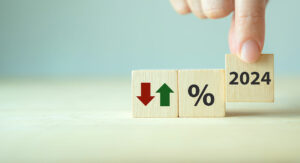Old Whine in New Bottles

The latest jobs report from the Bureau of Labor Statistics has analysts and economists venturing back into familiar territory. The 336,000 new jobs added in September – nearly double the expected 170,000 jobs – seems to have confounded the “experts” who were expecting confirmation of their preconceived notions of economic doom and gloom.
According to the conventional wisdom, the U.S. economy is sitting on the precipice of a recession, and the surprising September report has fueled concerns of an unsustainably strong job market. And despite average hourly earnings rising only 0.2%, observers are still convinced the Federal Reserve Board will stay on its path of interest-rate hikes for the foreseeable future.
But maybe the issue isn’t short-sightedness on the part of economists or merely the natural pessimism of the dismal science. Perhaps the disconnect between good news about the economy and the inevitable downturn in the cycle is an example of not seeing the forest for the trees. It’s not just that analysts and commentators are not thinking outside the box. They are looking at the wrong box.
The assumption that the economy’s continued strength is untenable and Fed policymakers will continue to put financial speed bumps on the road ahead is based on the notion that the world is moving past the impacts of the Covid-19 pandemic and is returning to normal. But that normality so many are seeking is a mirage.
The pre-pandemic economy is a thing of the past and the structural and psychological changes wrought by lockdowns and the rise of the virtual office have changed the foundation of the global economic system and there is no going back. Many of the assumptions about how economies work no longer apply and fears of a hard landing for the economy are based on outdated notions of the way things work.
The economy is not following the narrative scripted by market watchers and financial commentators, so the conclusions drawn all point toward a sharp downturn because that is all they know. Because the lure of somehow erasing the changes wrought by the pandemic is so strong, attitudes about the economic outlook are colored with a bias for a return to normality and the predictions of an inevitable recession amount to old whine in new bottles.
But this isn’t your father’s economy. The rise of the virtual office from intriguing possibility to widespread reality changed the fundamental nature of business organization and work life. The reluctance of workers to return to the brick-and-mortar world of the water cooler and conference room is not a temporary issue that will eventually disappear. Business large and small pivoted into new ways of operating during the pandemic changing the rhythms of the workday.
But none of this should be surprising.
A quarter of a century ago, then Federal Reserve Board Chairman Alan Greenspan spoke about the emergence of a “New Economy,” fueled by technological innovations and increases in globalization and productivity. The foundations of the new economic realities of the post-pandemic world were laid down in the last century and came to full fruition over the past few years.
It is time for economists to accept the idea of a new economy and re-think their assumptions about how things work in this brave new world and plan accordingly. Especially when it comes to making predictions about what lies ahead.
Or, perhaps they should channel Mark Twain responding to a newspaper that published his obituary, and consider that rumors of an impending recession have been greatly exaggerated.






